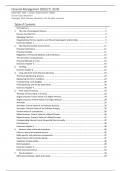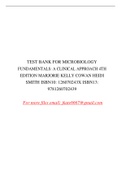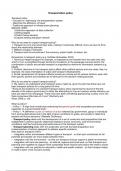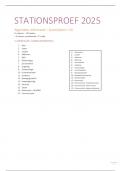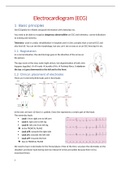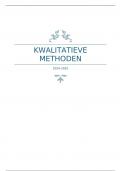mixed → ~yellow. In Situ Hybridization. Fluorescence microscopy. General colour of the
chromosomes will be yellow. When you have a gain in the tumor → you’ll have more green labelled
DNA. Less DNA in the tumor → red will “win”. This was the Classical CGH.
Microarray CGH uses a glass slide. They use clone DNA. Per clone (dot on the plate) you’ll get a
colour. Digital imagine analysis. You’ll score the reds and greens.
RNA profiling = Tumor RNA in green and Reference RNA or no RNA in red. Probes exons on the glass
slide.
NGS terminology:
Coverage: 0.5 deep or 100 deep. You need a coverage of ~30/50. Then it’s reliable.
HPV infection is mainly in the throat (oropharynx). Went from 5% in NL in 1990 to 60% in NL now.
Mutational signatures in HNSCC: age, APOBEC, Smoking, UV light. APOBEC signature links to HPV+ve
HNSCC. Driver mutations in PIK3CA are APOBEC mediated.
APOBEC is an intracellular immune system (family of proteins) ➔ Mutates and inactivates the viral
genome.
Week 2
Lecture 13 Regulated Protein Synthesis in Cancer
William Daller, NKI Amsterdam
mRNA is transcribed from the DNA in the nucleus. mRNA is going outside of the nucleus to the
ribosomes. Translation happens here → Initiation (AUG) – Elongation – Termination (UGA).
Protein synthesis can be a cancer treatment target. Very specific.
Ribosome Profiling (RiboSeq)
Take a cell → RNA bound by ribosomes are isolated → treatment with nucleases. Only the RNA
bound to the ribosomes are left. Small pieces. You’ll get a snapshot of the translation that is going on
in the cell. You’ll know what RNA’s are translated more or less (for example in cancers). Reads in the
5’leader (picture B on the slide). You can also get info on where the ribosomes are stopping → higher
peak on the graph. This can occur in cancers since they have limited amino acids in their
surroundings so when they need that specific amino acid that is missing in their environment, the
process will stop and you will detect that with this method → higher peak.
Translation in Cancer: Most of the cancers have changes in initiation. Deregulation of translation →
cancer.
Basic translation
5’ RNA contains a methylation CAP. 3’ end of the RN contains Poly-A tail (PAT, I guess?). you have the
coding sequence in the middle of the RNA. You also have a 5’ UTR (Untranslated Region) and a 3’
,UTR. The small ribosome subunit binds first to the RNA to the 5’UTR. Scanning till AUG comes → big
subunit joins → Elongation.
eIF = Eukaryotic Initiation Factor, eEF = Euk Elongation Factor, eRF = Euk Release Factor. Names of
the proteins to remember. Numbers are added to it but these are the basic names. eIF4E is rate
limiting. EIF4E +/- means one allele is affected, the other isn’t. 100% active EIF4E causes cancer. +/-
(so 50% EIF4E) prevents cancer → normal development & protein synthesis.
Elongation in cancer
Cancer cells inhibit the (rate of the )elongation, otherwise they run out of their supplies because then
the elongation will go too fast.
Amino acid is transferred to the next tRNA in the Acceptor site. EPA. New tRNAs come in site A.
Graph with bikers: graph with red line: more to the right = less
ribosomes (low graph) → translation is going fast here. In the
beginning, you see a high peak → many ribosomes here → slow
translation.
Stem cells drive the proliferation in the tumors.
Termination
At the stop codon: a release factor comes in instead of another
tRNA.
Mutations in p53 → early stop codon (the nonsense mutation in p53)→ no production of protein p53
→ loss of tumor suppressor function → tumor formation. How to fix this? Termination Readthrough
(reading through the stop codon so translation will continue). However, it will be slightly altered in
the way of a different conformation of the protein. Still better than no p53 at all.
Lecture 14 Non-Coding RNAs in Cancer
Nicolas Leveille, A/UMC
lncRNA = Long Non-Coding RNA. Examples of non-coding RNA: tRNA, ribosomal RNA (rRNA), siRNA,
snoRNA, snRNA, etc. RNA as regulator of gene expression?
2% of the human genome is protein-coding, 98% is non-coding, but it’s more than “Junk DNA”. More
than 70% of the genome can be transcribed. Transcription doesn’t necessarily lead to translation to
proteins.
Small noncoding RNA is under 200 bp, long noncoding RNA (lncRNA) is above 200 bp. miRNA (a
snRNA, <200bp) can influence mRNA translation and stability. It can repress/inhibit translation
(silencing). It can also cause deadenylation → mRNA degradation.
Let-7 hairpin RNA is conserved in humans (from the worm to humans). Let-7 is high → RAS is low.
Regulates RAS. I think it’s a tumor suppressor miRNA (showed in slide).
There are ~2000 miRNAs in humans. RISC = RNA Induced Silencing Complex → miRNA is inside →
binds to target genes → Translation inhibition or mRNA degradation.
, What is the most important feature to predict miRNA target sites? Complementary. At the
5’beginning. Most important region to predict the target sites. So, mostly the C-region.
miRNA in cancer (oncogenic miRNA = OncomiR)
Oncogenic miRNAs: miR17-92 cluster in lymphoma. Increase of mir-17-92b cluster levels promotes
the negative regulation of the pro-apoptotic BIM and the tumor suppressor gene PTEN. It can also
cause short bones.
Mostly miRNA is underexpressed in cancers → more translation. miRNAs can act as tumor
suppressors → gene silencing of tumor suppressor genes. Oncogenic miRNA: miR21. miR21-induced
pre B cell lymphoma. miR21 can cause cancer. This is called an oncogenic miRNA (oncomiR) just like
the miR-17-92 cluster.
You can let a tumor grow in immunodeficient mice (by injecting tumor cells of interest).
Cancer cells can be ‘addicted’ to oncogenic miRNAs.
Possible therapies: OncomiRs → anti-miRNAs (inhibition) & T.S. miRNAs → mimics.
Long Non-Coding RNAs (lncRNAs)
lncRNA HOTAIR: HOTAIR (for HOX transcript antisense RNA) is a human gene located on chromosome
12. It is the first example of an RNA expressed on one chromosome that has been found to influence
transcription on another chromosome → it controls gene expression.
LncRNAs are tissue or cancer specific, so they are attractive targets & diagnostic biomarkers.
LncRNAs can promote tumorigenesis (I think by silencing tumor suppressor genes epigenetically).
Lecture 15 Progression Models in Cancer
APOBEC is also important. It’s a cellular immune system. Mutates and inactivates the viral genome.
Stages: Early adenoma → intermediate adenoma → late adenoma → carcinoma → metastasis.
17p (p53) loss. More 17p loss in carcinomas. First they see a lot of RAS mutations, then a rise of p17
loss. Note that p53 is late in the process. Associated with BAX. In case of HNSCC (head and neck
cancer) p53 acts as one of the first ones (early genetic change).
Progression occurs by (in)activation of oncogenes and tumor suppressor genes.



